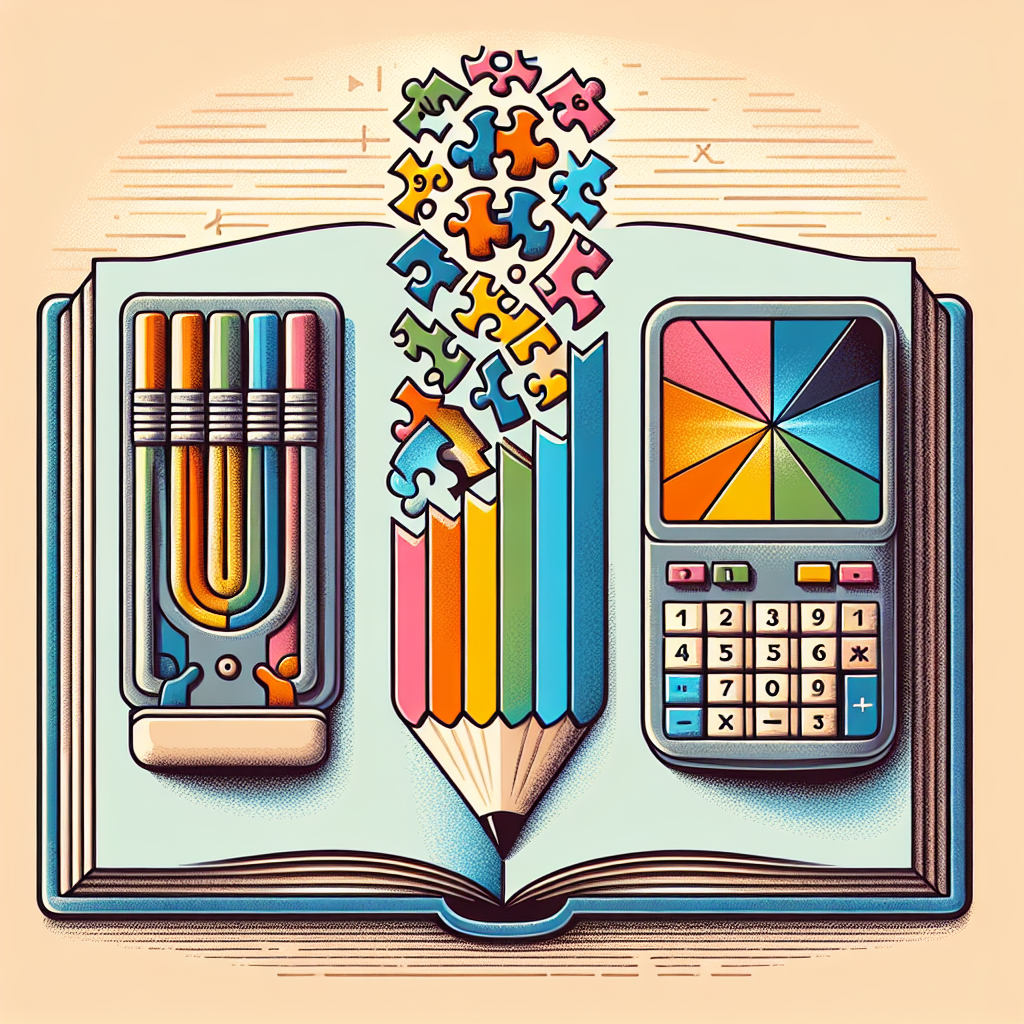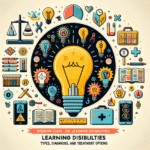
The Learning Disability Landscape: Essential Insights into Dysgraphia, Dyscalculia, and Autism Spectrum Disorders
Introduction
In an era where education is key to success, it is crucial to understand and support all learners, particularly those navigating the complexities of learning disabilities. Learning disabilities, including dysgraphia, dyscalculia, and Autism Spectrum Disorders (ASD), affect millions of individuals worldwide, presenting unique challenges within educational environments. Recognizing, addressing, and advocating for those with these disabilities is not just a matter of compliance, but a necessity for creating inclusive and productive learning spaces.
This article aims to provide comprehensive insights into the learning disability landscape, specifically focusing on dysgraphia, dyscalculia, and the spectrum of autism. By delving into these conditions, we will uncover the nuances, assistive strategies, and success stories that illuminate the broader conversation around learning disabilities. Whether you are an educator, parent, advocate, or individual seeking clarity, there are lessons to be learned that will empower and inform.
Understanding Learning Disabilities
Learning disabilities encompass a range of disorders that affect how individuals process information. They do not reflect a person’s intelligence but rather highlight the disparities in learning methods. Generally, they can be classified into three main types: dyslexia (reading difficulties), dyscalculia (mathematical challenges), and dysgraphia (writing disorders). Autism Spectrum Disorders, on the other hand, involve a broad spectrum of developmental conditions that impact communication, behavior, and social interaction.
Case Study: Recognizing Disparities in Learning
Consider the case of Sarah, a third-grader who excels in creativity and storytelling but struggles significantly with written expression. Her teacher noted that despite her imaginative ideas, Sarah’s handwriting is often illegible, and her ability to translate thoughts onto paper is hindered by frustration and anxiety. After identifying dysgraphia, Sarah received tailored support that included assistive technology and specialized writing strategies, which profoundly transformed her experience in the classroom. This case illustrates the importance of recognizing individual learning profiles within the broader learning disability landscape.
Dysgraphia: The Challenge of Written Expression
Dysgraphia is often characterized by difficulties in writing, impacting not only the legibility of letters and words but also the organization of thoughts on paper. Children with dysgraphia may struggle with fine motor skills, spelling, and even grammar.
Key Characteristics of Dysgraphia:
- Poor Handwriting: Letters may be uneven, poorly formed, or inconsistent in size.
- Struggles with Spelling: Frequent spelling errors, even on familiar words.
- Difficulty Organizing Ideas: Thoughts may be poorly sequenced or incomplete.
Strategies and Interventions for Dysgraphia
- Assistive Technology: Encouraging the use of speech-to-text apps can help alleviate the burden of handwriting while allowing the student to express their thoughts more freely.
- Multi-sensory Learning: Implementing approaches that combine visual, auditory, and kinesthetic learning can reinforce skills.
| Strategy | Description |
|---|---|
| Digital Tools | Utilize text-to-speech and speech-to-text software. |
| Modified Assignments | Offering typed assignments instead of handwritten. |
Case Study: Implementing Effective Interventions
Meet Tom, a fifth-grader diagnosed with dysgraphia. His school implemented several innovative strategies, including a computer-based writing program and a focus on visual planning with graphic organizers. These tools not only improved Tom’s writing but also boosted his overall confidence in academic settings. His progress reinforces the need for well-rounded interventions tailored to his unique challenges.
Dyscalculia: Mastering Mathematical Concepts
Dyscalculia is another significant learning disability that manifests as a profound difficulty in understanding numbers and mathematical concepts. Those affected may experience challenges in simple arithmetic, spatial awareness, and time management.
Signs of Dyscalculia
- Poor Number Sense: Difficulty grasping numerical concepts, quantities, and relationships.
- Problems with Math Operations: Frequent errors in basic calculations and problem-solving.
- Avoidance of Math-Related Tasks: Developing anxiety or frustration related to anything involving numbers.
Approaches for Supporting Students with Dyscalculia
- Visual Aids: Using visual representations like number lines, counters, and visual math games can help in learning basic concepts.
- Real-Life Application: Integrating math skills into daily routines can make math more relatable and less intimidating.
| Strategy | Description |
|---|---|
| Concrete Materials | Use tangible objects (like blocks) to explain mathematical concepts. |
| Alternative Assessments | Provide assessments that focus on understanding rather than rote memorization. |
Case Study: A Holistic Approach to Math
Consider Liam, a seventh-grader diagnosed with dyscalculia. His teacher utilized a mix of visual aids and real-world applications, such as budgeting exercises and cooking measurements, to help him grasp math concepts. Over time, Liam embraced math as a subject, showcasing how practical application can alter a student’s relationship with numbers.
Autism Spectrum Disorders: A Broad Spectrum of Learning
Autism Spectrum Disorders (ASD) encompass a range of neurological and developmental conditions characterized by challenges with social skills, repetitive behaviors, and various communication barriers. It’s essential to recognize that ASD exists on a spectrum, meaning the characteristics can vary widely among individuals.
Core Areas of Difficulty
- Social Communication: Many individuals with ASD may struggle to interpret social cues, understand conversational norms, or engage in sustained interactions.
- Repetitive Behaviors: Exhibit interests or activities that may be overly focused or repetitive.
- Sensory Sensitivity: Individuals may have heightened or diminished sensitivity to sensory inputs like sounds, lights, or physical sensations.
Supporting Students with Autism
Supporting individuals with ASD requires tailored interventions that focus on communication skills, social understanding, and sensory integration.
- Visual Supports: Incorporating visual schedules and social stories can create a framework for anticipating daily tasks.
- Structured Routines: Establishing predictable routines helps individuals feel more secure and understand expectations.
| Strategy | Description |
|---|---|
| Peer Buddies | Pair students with neurotypical peers to assist in social interactions and engage in cooperative learning. |
| Sensory Breaks | Designing quiet areas where students can retreat when sensory overload occurs. |
Case Study: Fostering Social Skills
Take the case of Mia, an 8-year-old girl with ASD. With her teacher’s assistance, the school initiated a "peer buddy" system where she partnered with a classmate to facilitate social interactions during lunch and recess. Through this peer engagement, Mia learned how to initiate conversations and responded positively to varying social situations, demonstrating the impact of peer support in the learning disability landscape.
The Importance of Early Intervention
As research indicates, early identification and intervention can profoundly impact learning trajectories for students with disabilities. The longer a student struggles without proper support, the greater the risk of decreased self-esteem and academic failure. Schools, parents, and communities must work collaboratively to create early detection systems and responsive educational frameworks.
Benefits of Early Intervention
- Increased Understanding: Early identification allows for personalized strategies that can be implemented right away.
- Enhanced Self-Esteem: Providing support early helps students feel competent and valued in their educational environment.
Case Study: The Impact of Early Support
Consider Jake, diagnosed with dyscalculia at an early age. His school adopted an early intervention model that included specialized math tutors and parental involvement. By the end of elementary school, Jake not only improved his math skills but also developed a love for learning, showcasing that the earlier support begins, the more successful individuals can be in overcoming academic challenges.
Building Supportive Educational Environments
Creating an inclusive educational environment extends beyond acknowledging learning disabilities. It involves proactive measures that promote acceptance, understanding, and support.
Best Practices for Educators
- Professional Development: Ongoing training for teachers on learning disabilities, inclusive teaching methods, and the importance of differentiated instruction.
- Flexible Assessments: Offering various assessment methods (oral, project-based) to demonstrate understanding.
| Practice | Description |
|---|---|
| Collaborative Learning | Encourage group projects that embrace varied skills and strengths within the group. |
| Open Communication | Establish consistent communication channels with parents regarding student progress and strategies. |
Case Study: Inclusive Classroom Strategies
In a mixed-ability classroom led by Mrs. Collins, strategies like project-based learning allowed students with various learning disabilities, including dysgraphia and ASD, to shine. By adjusting tasks based on individual strengths, all students felt valued and empowered to contribute, reinforcing the importance of inclusivity in the learning disability landscape.
Conclusion
The learning disability landscape reveals a wealth of opportunities for growth, understanding, and support across varied learning needs. Dysgraphia, dyscalculia, and autism spectrum disorders require robust and empathetic approaches to ensure that all students receive the education they deserve. Through innovative practices, early interventions, and genuine acceptance, we can cultivate environments that foster not only academic success but also emotional well-being and confidence.
As stakeholders in education, it is our responsibility to advocate for those whose voices might otherwise go unheard. By raising awareness and employing effective strategies, we can transform the learning experience for students and support their journey toward becoming thriving, engaged adults.
FAQs
1. What are the signs of dysgraphia?
Signs of dysgraphia include poor handwriting, spelling difficulties, and challenges with organizing thoughts on paper.
2. How can parents support children with dyscalculia?
Parents can support children with dyscalculia by using visual aids and integrating math into daily life, such as through cooking or budgeting exercises.
3. What is the spectrum of autism?
The autism spectrum refers to a range of neurological conditions that impact communication, social skills, and repetitive behaviors at varying degrees of severity.
4. How is early intervention beneficial for learning disabilities?
Early intervention can significantly improve outcomes by allowing for tailored support, which enhances self-esteem and academic performance.
5. Can assistive technology help students with learning disabilities?
Absolutely. Assistive technology, such as speech-to-text software and digital planners, can alleviate challenges students face and facilitate their learning.
6. What role do teachers play in supporting students with learning disabilities?
Teachers play a critical role by identifying needs, implementing supportive strategies, and fostering an inclusive and adaptive learning environment.
By weaving together insights from real-world experiences, strategies for support, and the crucial importance of early intervention, individuals interested in learning disabilities can cultivate better outcomes for all students affected by dysgraphia, dyscalculia, and autism spectrum disorders. Embrace the journey, and let’s strive for a more inclusive future in education.









